[Hand of T O'Conor]
Ballinakill Parish - in Leitrim Barony in Co: Galway - notable objects therein described.
Sir,
The Irish name of Ballinakill parish in the barony of Leitrim in the County of Galway, is Baile na Cille which signifies the town of the Church, 'Villa Cellar'.
The old Church of the parish stands in ruins in the townland of Ballinakill about three miles N.W. of Woodford village. Its length inside is 45 feet, and its breadth is 23 feet; the East gable is reduced to the same height with that of the side-walls, and has a breach on the middle of it, where there was probably a window. It comes within 3 feet of the ground and is 8 feet broad.
There is a breach on the North side wall within 12 feet of East gable; 3½ feet from the ground, 6 feet broad and reaching to top. And on the same wall, within 12 feet of the West gable is another breach, nearly 4 feet from the ground, 8 feet broad and reaching to top.
On the middle of the West gable, is a door way of a quadrangular form, 5 feet broad at the ground and 7 feet high; having two stone flags placed over it, which meet nearly in the middle. It is built with stones and Cement of lime and sand mortar. Both its sides are somewhat battered. Sustained by two flags over the door, is a small pointed arch of mason work, which is (now) stopped up, and is about 2 feet high.
The South side wall at the distance of 10 feet from the West gable exhibits a breach 7 feet from the ground, 6 feet broad, and running to the top, where there was, as appears from some traces on the wall, undoubtedly a window.
In this parish about 3½ miles to the North East of Woodford, are seen the ruins of an abbey (this is the Abbey called Kinalekin by Ware and Archdall and Cinel-Fechin by the Four Masters at the year 1601, J.O'D), which,
as appears from the space occupied by the remains of it (or by them), was considerably extensive. The length inside the principle Church from one gable to the other, is 124 feet. The breadth can hardly be ascertained with accuracy, as one of the side walls was (or became) entirely removed (effaced), so that there is not a vestige of it visible.
On the gable to the East, there is a large window of chiseled stones, divided into three openings (lights) which are semicircular at top.
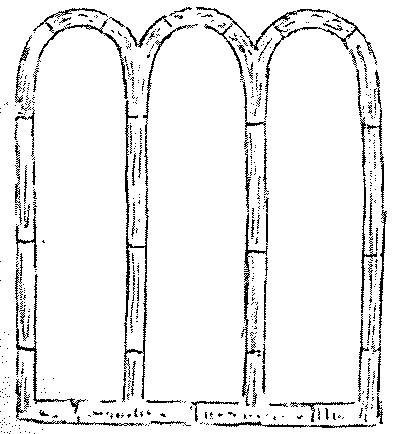
To the left, as one looks inside towards this window, on a wall continuous with the gable, a quadrangular window of chiseled stones, is placed, which is 4 feet high and 3 feet broad.
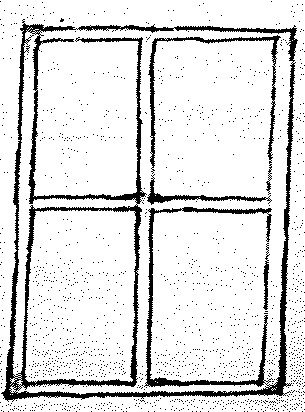
At this gable and on the South side of the Abbey, a pointed arch of chiseled stones, springs from the ground, where it measures about 14 feet, being no less than 15 feet high. It is closed up with mason work, on which is placed a door, by which one enters to a small ruinous Chapel attached here to the Abbey.
Inside the Abbey, at the east gable, and immediately to the left as one enters this Chapel, is a tomb, which exhibits this inscription. -
ERECTED TO THE MEMORY OF DOUAGER LADY BURKE OF
MARBLE HILL, WHO DIED THE 24TH OF JUNE 1833
AGED 74 YEARS UNIVERSALLY RESPECTED.
LOVED AND MOURNED BY HER AFFLICTED CHILDREN
AND ALL WHO KNEw HER MATERNAL AFFECTION
HER EXEMPLARY PIETY, HER UNOUSTENTATIOUS
CHARITY AND BENEVOLENCE.
To the left, when one enters the little chapel, he sees placed in the wall, a stone exhibiting the armorial bearings of the Burkes,
Under which are these words. -
UNE FOY UNE ROY UNE LOY
Then there is inscribed under this. -
THIS CHAPEL AND MONUME
NT WERE REBUILT BY
EDMOND BURKE OF MEE-
LICK, ESQR. FOR HIM &
HIS POSTERITY IN
THE YEAR 1741.
Immediately to one's right, as he reads this inscription, is a neat {altar} monument over which, is inscribed
F D. T. A.D. M: D. G:
D. THO. DE BURGO. APALIS. [Space left in MS] ARMIG: HOC MONUMENT: IBI. PARENTIBUS. PIAE. MEM: JOAN. NE [Space left in MS] SEONAC. ET UNI. NE. AEGAN SIBI. SUISQUE: CONVGIB: D: ISABELLAE. DONNELLAN. DEFUNCTAE ET D. AGNETI. FRENCH. NUNC VIVENTI. FILIISQ: EX UTRAQ: SUSCEPTIS: JOAN: VZ: ACIOANI. EX PRIMA. ET FRAN: EX SECUNDA. EORUMQ: POSTERIIS. ERIGI CURAVIT. ANO: 1649.
To the right as one enters the Chapel, are seen on a stone placed in the wall armorial bearings [Gap left on page, as if for a sketch] Under which is inscribed
HEREUNDER
IS INTERRED
CAPTAIN. LUKE. BOUR
KE, SON. TO. THE. RT. HON
ORABLE. THEOBALD. LORD
VISCOUNT. OF. MAYO. AN
D. ELYNOR, FITZGERALD.
DAUGHTER. TO SR. LUKE
FITZGERALD. OF TICRHAN. WHO. DIED. THE
10TH. OF MARCH 1684
This Chapel retains a ruinous slated roof, which was, it is said, put on it about 15 or 16 years ago.
In another Chapel attached to the same side, a little farther to the Western end, there is directly opposite, as one enters it, an {altar} monument with armorial bearings shown over it [Gap left on page, as if for a sketch] Under which is inscribed
UNE FOY UNE ROY UNE LOY
{and}
THIS MONUMENT HAS BEEN ERECTED
BY JOHN BURKE (BURHE) OF REAGHAN
ESQR. FOR HIM AND HIS POSTERITY
THE YEAR OF OUR LORD 1745.
On this Chapel is a doorway of mason work of this form in the upper part.
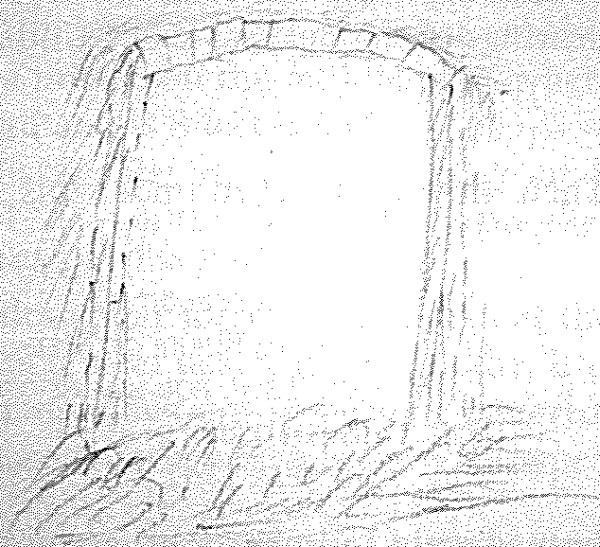
There is on the same side, another similar edifice with a door of this same form; but it exhibits nothing worthy of notice.
Between these and the West end, stand on the same side, two pointed arches, the sides of which, are constructed with chiseled stones, whilst the upper part consists of mason-work of rude stones and mortar.
Farther on, between these arches and the Western part, is a window of chiseled stones, which is thus formed, being semicircular at top. [Fig. 61]
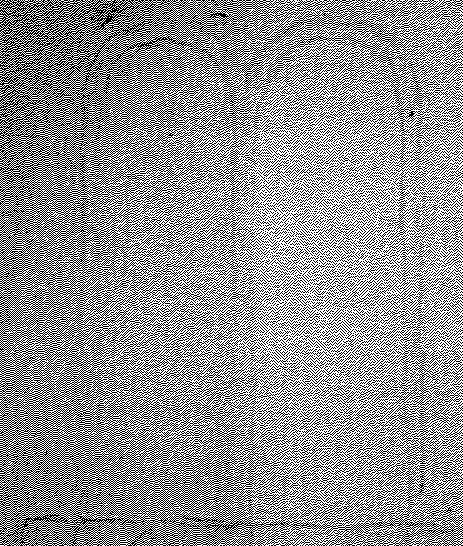
On the West gable, is a circular door of chiseled stones, which is 4 feet 2 inches broad and nearly 7 feet high. Over it, a small stone representing the figure of a human head, is to be seen; and to the right of it, as one enters the church, is placed on the outside, in the wall, a water font.
Over this door, is a large window of chiseled stones, exhibiting this form. - [Fig. 62]
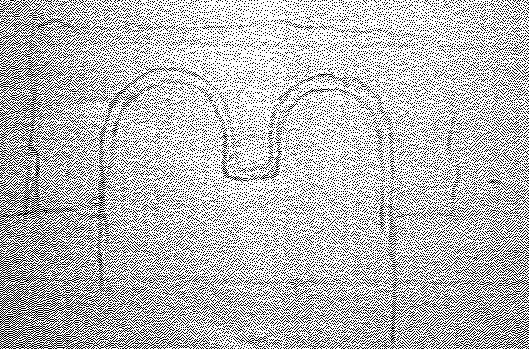
In the North part of the remnants of the ruinous walls of this abbey, stands a gable with two stone Chimneys on it, conjoined together.
There are visible on the walls, in several places, small quadrangular openings of chiseled stones; as well as openings of similar construction and form with the doorway of the small chapel, as above given.
Some of these large openings are stopped up with stonework, on the E. by North side of the ruins.
Lady's well lies in the townland of Abbey at the North end of Abbey village.
I find no notice taken of this Abbey in any of our ecclesiastical documents.
The following burying places are found within this Parish.
Kilcrimple burying place in the N.E. end of the townland of Marble Hill, 3/4 of a mile E.N.E. of Marble Hill House.
Kilcurragh {old burying place} in the S. West end of the townland of Curragh 2½ miles N.N.E. of Marble Hill House.
Knockbaun {old burying place} in the South end of Derry-golan townland, ¼ of a mile N.E. of Coolnabinne Rock,
and about 4½ miles S.S.W. of Woodford.
Tanyard {burying place} for strangers a short distance to the West of Woodford village.
In Doorus townland {Dubh Ros} there is a burying ground, in which none of those, whom I consulted, remembers to have at any period, seen any part of the walls of a Church, standing. There is a tree at it, called 'Bell (Bile?) Tree', a name that originated in a tradition among the people, who say that a bell used to be heard every seven years ringing in it. Local information says there was a friary near the grave yard, (situated) at a mound of earth, which lies partly effaced in an adjacent field.
At this place is also Church well; and a well called James' Well, which I could not learn, were at any time regarded as holy wells.
Rossaganny {Ros a Ghainimh, locally Gort a Ghaimimh} grave yard in the N.E. end of the townland of Rossmore.
Feighan's grave yard on the boundaries of Well Park and Lacken T.Ls., close to which is Feighin's well.
Gortnakilla {Gort na Cille} grave yard in Cloonmweelaun townland.
Lishuglass {or Lisshergloss} burying ground, in Drim townland. This name I could not find in the local form, known by any one consulted by me about it.
Ahanass grave yard {Ath an Easa} in Boolananollogue townland (Búaile na Nollog).
Creekawnagall (qu? {rectè} Knockaun) is set down in the Name books, as the name of a burying place for children, in the townland of Moyglass. This I could not find locally known.
Hermitage is the name of a small house {cell}, at (near) which are Lady's well, a monument and burying place, in the South end of the townland of Culleendaveeagh {Coillin da Fhiach}. Tobermacduagh {Tobar mac Duach} is the name of a well lying to S.E. of Marble Hill House.
CASTLES
Ballinakill old castle stands in a tottering state at Ballinakill village and not far from the old Church above described.
Cloondagaw Castle stands in ruins on a rock in the townland of Cloondagaw*, close by the
shore of Loughderg on the Shannon. It sometimes goes by the name of Cregg Castle from its being situated on the rock. The walls remain nearly entire.
*Cluain-da-damh {the Cloondagaw here} occurs in the Annals of the Four Masters at the year A.D. 1580. See the Lettem which treats of Loughrea, whemein the whole passage is given.
In the Centre of the townland of Coolfin, Cúil Finn, stands in ruins a Castle, which bears the same name with the townland.
Inquisition taken before John Crofton Esqre. at Athenry 1st October 1584 found that Rickard {2nd} Earl {of Clanrickard} died 24th July 1582 seized of several manors and Castles and together with them the Castle of Clondagawe.
See Inquisition taken at Galway 24th March 1608 before Geoffrey Osbaldstone Esqr. &c.
In the Inquisition of 1608, just referred to, we find that Ulick {3d Earl of Clanrickard} was seized of several lands &c., among which are set down -
(1) The Castle of Cloyndaagaw {with 2 q. of Cloynedagawe and Rossmore}
(2) Twaymoylcon {2 q.}
(3) Ballynroane (1 q.} Cloynrush (1 q.}
(4) Kilbrathire als Ballashanvoich (4 q.}
(5) The Castle of Ballynekilly (& 1 q.}
(6) Leacarrow Mac Dermott (½ q.} Keapeagh (½ q.}
(7) The Castle of Beallaneneane {& ? q.}
(8) The Castle of Coolfin {& 1 q. in Kynalehen}
(9) Tullagh (1 q.}
(10) Moyglasse {½ q.} Caherardarwey {1 Car}, the third pte of a q. neere Colfinne being pcell of the lands of the Sept of Iandavyes, the Castle of Killeowly {with 5 q.}
(1) Cloondagaw - already identified [In pencil: in Ballinakill Ph. Leitrim By.]
(2) Rossmore - a townland in the S. East end of Ballinakill parish [In pencil: Leitrim BY.]. Twaymoylcon - ?
(3) Ballynroane - Ballinrooaun T.L. in the parish of Clonrush [In pencil: Barony of Leitrim]. Cloynrush - I find Clonrush as the name of a parish, and as the name of a burying place containing the ruins of an abbey in the South end of the townland of Meelick; but not as the name of a townland [In pencil: Leitrim Barony] in the namebooks of Clonrush Parish.
(4) Kilbrathire alias Ballashanvoich. Kilrateera (Cill Raitíre) upper & Lower T.Ls. in Inishcaltra parish [In pencil: Leitrim Barony].
(5) Ballynekilly - already identified [In pencil: Parish & Townland in Leitrim Barony].
(6) Leacarrow Mac Dermott - ? [In pencil: Lecarrow N & S. are townlands in Ballinakill Parish, Leitrim Barony, & there is a Lecarrow in Kilmeen, same Barony]
Keapagh - Cappagh townland in the N. East end of the Parish of Ballinakill [In pencil: Leitrim Barony].
(7) Beallaneneane - ?
(8) Coolfin - already identified. [Townland & Castle in Ballinakill Ph., Leitrim Barony]
(9) Kynalehen - of what is it the name? (of a territory - Cinel Fheichin, J.O'D.)
Tullagh - Tulla townland in the centre of the parish of Ballinakill [In pencil: Leitrim Barony].
(10) Moyglasse - Moyglass {Magh Glas} T.L. - in (near) the centre of Ballinakill Ph. [In pencil: Leitrim Barony].
Caherardarwey - ?
Colfinne - already identified.
(11) Killeowly - Kilcooly Castle in Kilcooly> parish in Leitrim Barony.
Giants graves, which are 8 in number, lie in the townland of Marble Hill; and Labadiarmad {Leaba Dhiarmad, i.e. Diarmad's bed}, which is described in the Name book, (as) a cave with a stone over it, is situated in the townland of Knockroe, one mile N. East of Marble Hill House.
Dutton, in his Statistical Survey page 470, says that,
There are several Cromlechs†, or Druids' altars, as they are frequently called; some of very rude workmanship, which shews their high antiquity, and others on which, more pains have been bestowed. Some are of one rude flag supported by equally rude pillars; in others the flag is upheld by side flags; they are uniformly destitute of any inscription, which plainly proves their erection at a very remote period. There is a fine one in the demesne of Marble Hill, of one stone 30 feet long by eight feet broad; it was much injured by the hands of ignorance before the late Sir Thomas Burke became possessed of the estate, as many of the stones were taken for the purpose of building a common wall. It is strange the little interest many gentlemen take in the records of antiquity, as to permit them to be mutilated, or perhaps entirely demolished. Sometimes, these Cromlechs are called Leabha Diarmuid is Grane, or from some whimsical allusion, Darby and Grane's bed. There can be little doubt they were used for some religious ceremony of the Druids, and in after-times, might have been imitated or used for places of sepulture, but they are so different in their form and workmanship as not to be mistaken. I do not recollect to have seen any of those pillar-stones that are reckoned of such high antiquity, but that on the Countess's hill near Dunsandle; tradition says it is of a very remote period &c.
†'Grose says the derivation of Cromlech is from the Armoric word Crum, crooked and leh, a stone.' - {Note at the end of p. 470.}
T. O'Conor
